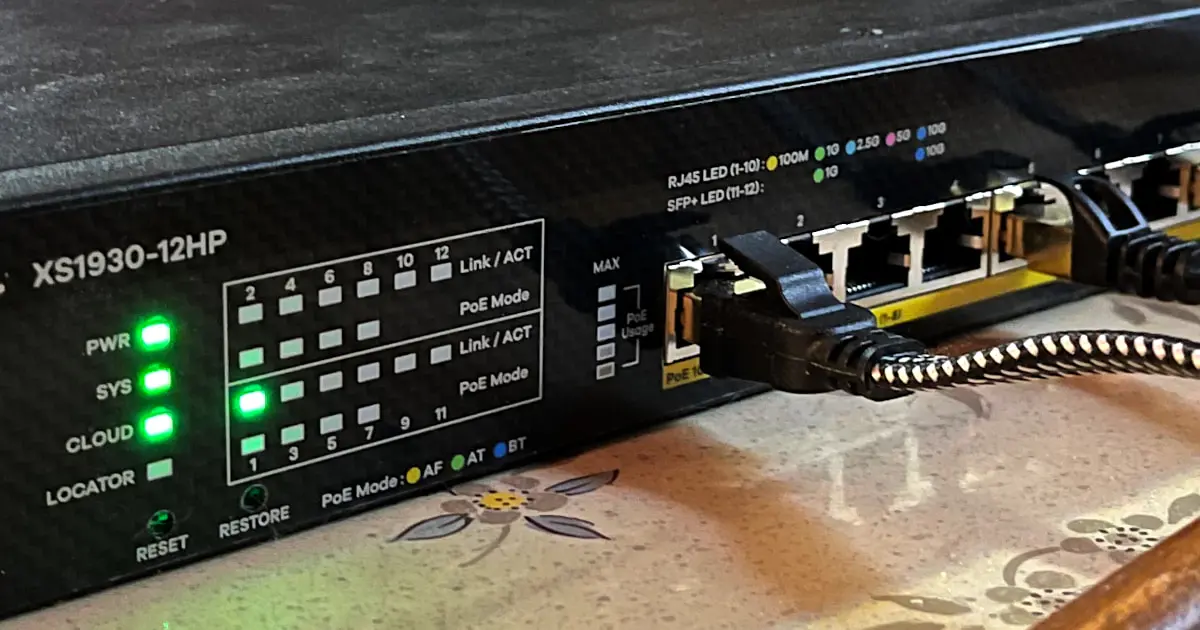Are There Programs Available To Help Make Internet Service More Affordable?
Nov 6, 2025 | Share
FAQ

Several programs exist to help make internet service more affordable to low-income households. There are both government subsidies and low-income internet programs from internet service providers (ISPs) that can lower your internet bill. With the Affordable Connectivity Program (ACP), the most effective and comprehensive program for increasing internet access ending, many people are in need of a good alternative.
We’ll walk you through these inexpensive internet plans, income-based programs, and low-income family plans to help you reduce the cost of staying connected.
Programs for low-income internet
| Provider | Program | Who qualifies | Offer | More info |
|---|---|---|---|---|
| Federal Communications Commission | Affordable Connectivity Program (ACP) | Households that make less than 200% of federal poverty guideline or have at least one member participating in certain public assistance programs This program is not currently accepting new applications due to lack of funding. | $30.00 off monthly internet bill(or $75.00 for Tribal lands and some other areas). | Learn More |
| Federal Communications Commission†† | Lifeline discount | Households that make less than 135% of federal poverty guideline or have at least one member participating in certain public assistance programs | $9.95 off monthly internet or phone bill through certain ISPs | Learn More |
| Federal Communications Commission | Enhanced Lifeline benefits for Tribal lands | Low-income households on federally recognized Tribal lands | $34.95 off monthly internet bill | Learn More |
| Optimum | Optimum Advantage Internet with speeds up to 30Mbps | New customers with a child recipient of NSLP, seniors eligible for SSI, or veterans receiving public assistance | $14.99/mo. with no cost for first 60 days* | Learn More |
| AT&T | Access program internet with speeds up to 10Mbps | At least one person in household must participate in SNAP | $5.00–$10.00/mo.† | |
| Spectrum# | Internet Assist with speeds up to 50Mbps (wireless speeds may vary; for qualifying households) | New Spectrum customers with at least one recipient of certain public assistance programs in the household | $25/mo.# | Learn More |
| Comcast Xfinity§ | Internet Essentials package with speeds up to 75Mbps | New Xfinity customers who are eligible for public assistance programs | $14.95/mo. | Learn More |
| Comcast Xfinity§† | Internet Essentials package with speeds up to 100Mbps | New Xfinity customers who are eligible for public assistance programs | $29.95/mo. | Learn More |
| Cox††† | ConnectAssist package with speeds up to 50Mbps | Available to households who currently participate in an income-based government assistance program such as SNAP or Medicaid. | $30.00/mo. | View Plans |
| Cox** | Internet up to 50Mbps through Connect2Compete program | New Cox customers with at least one K–12 student in household who qualifies for public assistance programs | $9.95/mo. | View Plans |
| Mediacom†† | Internet up to 25Mbps through Connect2Compete program | New Mediacom customers with at least one K–12 student in household who qualifies for National School Lunch Program | $9.95/mo. | Learn More |
| Verizon Fios§§ | Monthly discount off fiber internet plans | New Verizon customers who are enrolled in the Lifeline Discount Program | $20 off monthly internet bill§§ | Learn More |
Internet First | Internet up to 50Mbps in areas served by RCN, Wave, or Grande | New subscribers with at least one member in household participating in certain public assistance programs | $9.95/mo. with no cost for first 60 days*** | Learn More |
Data effective 02/25/2025. Not all offers available in all areas. Plans, benefits, and qualifications subject to change.
Read disclaimers.
Are you a student looking for deals on internet service?
Check out our guide to internet service for students.
Government Assistance
Affordable Connectivity Program (ACP)
The Affordable Connectivity Program (ACP) is a low-income internet program that helps families afford an internet connection by subsidizing the cost of their internet bill. The ACP provides $30 per month toward a household’s internet bill, though households on Tribal land or high-cost areas might be eligible for enhanced support of up to $75 per month.1 By August of 2023, more than 20 million households have signed up for the ACP program, making it the nation’s largest broadband affordability program.4
You may qualify for the ACP if at least one person in your household meets the following criteria:
- Qualifies for the Lifeline Program
- Is approved for the National School Lunch Program (NSLP) or School Breakfast Program (SBP)
- Has received a Pell Grant in the current year
- Is currently eligible for certain providers’ low-income programs
- Receives assistance through SNAP or WIC
This program replaced the Emergency Broadband Benefit (EBB) program that was instituted in 2021 to help those dealing with the effects of the COVID-19 pandemic.
The ACP is not currently accepting applications. It has paused new enrollment until Congress passes a new funding bill.
On May 9, 2022, President Biden announced that 20 internet providers had committed to offering eligible households high-speed internet access for $30 or less.2 With the ACP, the cost is covered completely, giving these families high-speed internet at no cost.
As of May 9, 2022, the following providers have committed to offering ACP-compatible plans under $30:
- Allo Communications
- AltaFiber
- Hawaiian Telecom
- Optimum
- Astound
- AT&T
- Breezeline
- Xfinity
- Comporium
- Frontier
- IdeaTek
- Cox Communications
- Jackson Energy Authority
- Mediacom
- MLGC
- Spectrum
- Starry
- Verizon (initially Fios only)
- Vermont Telephone Company
- Vexus Fiber
- Wow!
For more information, check out our guide to the Affordable Connectivity Program.
Want to know which ACP-committed providers offer service in your area?
Enter your zip code below to find out.
Lifeline
Lifeline is a government program backed by the Federal Communications Commission (FCC). It provides a monthly phone or internet service discount for low-income households.
Lifeline benefits give eligible subscribers a discount of at least $9.25 per month off either landline phone service, wireless phone service, broadband, or bundled services. Enhanced Lifeline benefits for Tribal lands bumps the discount up an extra $25 for a total discount of $34.95 per month for households within federally recognized Tribal lands.
Pro tip:
Each household can claim only one Lifeline discount for phone OR internet service, so make sure to prioritize the one you use the most.
Your household may qualify for Lifeline if your income is at or below 135% of the federal poverty guidelines. Additionally, you may qualify if you or someone in your household participates in certain federal assistance programs:
- Supplemental Nutrition Assistance Program (SNAP)
- Supplemental Security Income (SSI)
- Veterans Pension and Survivors Benefits
- Federal Public Housing Assistance (FPHA)
- Medicaid
- Tribal Programs for Native Americans
To find ISPs that offer Lifeline discounts and check your eligibility for the program, visit the Universal Service Administration Co. website. The USAC is part of the FCC, and it oversees the Universal Service Fund, which funds Lifeline discounts and the Emergency Broadband Benefit Program.
Emergency Broadband Benefit (EBB)
The FCC opened enrollment for the Emergency Broadband Benefit program on May 12, 2021 and closed December 31, 2021. It provided a monthly discount of up to $50–$75 for qualified households. It also granted a one-time discount of up to $100 toward a new laptop, desktop, or tablet when purchased from participating providers.
These benefits are limited to one monthly service and one new device per household. To qualify, you must meet at least one of the following criteria:
- Qualify for Lifeline, SNAP, Medicaid, FPHA, SSI, the Veterans and Survivors Pension Benefit, or certain tribal programs
- Have an income at or below 135% of the Federal Poverty Guidelines
- Participate in the National School Lunch Program (NSLP), School Breakfast Program (SBP), or the USDA Community Eligibility Provision during the 2019–2020 school year
- Receive a Federal Pell Grant during the current award year
- Have suffered a substantial loss of income since February 29, 2020, resulting in a total 2020 income below $99,000 for single filers and $198,000 for joint filers
- Be eligible for a participating internet provider’s own existing low-income or COVID-19 program
The EBB program ended December 31, 2021, but those enrolled when the program ended have a 60-day transition period where they can continue to receive those benefits.1
ConnectHomeUSA
ConnectHomeUSA began in 2015 as a public-private partnership between the US Department of Housing and Urban Development (HUD) and other organizations. It’s goal is to narrow the digital divide for families with school-age children in HUD-assisted housing.
The program is currently operating in more than 80 communities in the US, with new communities added every year. Residents of ConnectHomeUSA communities can find resources to help find affordable internet services and devices. And if you don’t live in one of those areas, there are resources for people interested in starting a digital inclusion program in their own community.
State programs for low-income internet
With federal programs like the ACP ending without a clear nationwide replacement, some states have begun to roll out their own programs to help their residents find affordable internet plans.
New York
New York’s Affordable Broadband Act (ABA) was passed in April 2021, just a year after the first wave of the COVID-19 pandemic hit the state. This “first-in-the-nation” legislation was challenged by lobbying groups and blocked for several years before that block was overturned three years later in April 2024 and went into effect in early 2025.
The ABA requires ISPs to provide low-income New Yorkers with $15 per month internet plans for speeds up to 25Mbps or $20 per month for speeds up to 200Mbps. To qualify, households must have incomes below 185% of the federal poverty guidelines or be eligible for programs like the Supplemental Nutrition Assistance Program (SNAP), Medicaid, or Free or reduced-price school lunch.
Pro tip:
If you need inexpensive or free internet and you don’t qualify for low-income programs, check out our guide to getting free home internet.
Low-income internet programs from internet providers
Many ISPs also offer their own assistance programs for families with low income or other needs that wouldn’t otherwise be able to afford internet access. If you don’t qualify for Lifeline or prefer to use the benefit for phone service, this can be a great option.
Customers with access to Optimum can sign up for Optimum Advantage Internet, which offers internet speeds up to 30Mbps for $14.99 per month for those who qualify.
The Optimum Advantage Internet program is available to those who have a child recipient of the NSLP in the household, receive Supplemental Security Income (age 65+), or are US military veterans who receive public assistance.
Visit the Optimum Advantage Internet webpage to see if you qualify and apply.
AT&T’s Access program offers internet speeds up to 10Mbps to eligible low-income families for $5–$10 per month. To qualify for Access, customers must have at least one family member who participates in the SNAP program.
Visit the Access page to fill out an application and see if you qualify.
Spectrum offers an Internet Assist program similar to Xfinity’s Internet Essentials. Internet Assist offers up to 50 Mbps (wireless speeds may vary) for $25 per month, with no data cap and no contract. The program is available to households where one member is a recipient of the National School Lunch Program, Community Eligibility Provision of the NSLP, or Supplemental Security Income (≥ age 65 only).
Internet Assist costs $25 per month, but the ISP charges an extra $5 per month if you want WiFi.
To apply for Spectrum Internet Assist, call Spectrum at 1-855-542-6651.
Xfinity offers an Internet Essentials program that allows qualifying customers to purchase a plan for just $14.95 per month. This program is designed to help students, seniors, and low-income families. It offers internet speeds up to 75Mbps and free in-home Wi-Fi, and it doesn’t require a credit check.
Xfinity also offers low-cost computers as part of the Internet Essentials program. Customers can choose a laptop or desktop computer for $149, which includes Microsoft Office, Norton Security Suite, and a 90-day warranty.
To get Internet Essentials, customers need to fill out an application and wait to be approved. For a family to qualify, they must have at least one child eligible for the National School Lunch Program and meet a handful of other requirements.
To apply for Xfinity Internet Essentials, visit the Internet Essentials website .
Cox Low-Cost Internet is part of the Connect2Compete program, aimed at helping K–12 students reach their full potential by providing internet access to low-income families. Low-Cost Internet is $9.95 per month and is available to families with at least one child in kindergarten or grades 1–12.
Eligible families must also be participating in one of the following programs:
- National School Lunch Program
- Supplemental Nutrition Assistance Program (SNAP)
- Temporary Assistance for Needy Families (TANF)
- Public Housing
To apply for Cox Low-Cost Internet, visit the website and fill out the form.
Mediacom’s Connect2Compete program partners with EveryoneOn to offer inexpensive internet for students eligible for the NSLP. The program includes a 25Mbps internet connection and Wi-Fi modem for $9.95 per month.
Check your eligibility or sign up by calling 1-855-904-2225 or through Mediacom’s Connect2Compete online application.
You can get the usual Lifeline discount with Verizon, but the ISP also has its own discount for people enrolled in the program. Verizon offers $20 off Verizon Fios internet plans on top of the $9.95 Lifeline discount. That means you could get Verizon’s 300 Mbps internet plan for just $19.99 per month.
Verizon also recently launched its Verizon Forward Program, which provides 5G Home internet, LTE Home internet or Verizon Fios at no cost as part of Verizon’s participation in the Affordable Connectivity Program.3
To learn more, visit the Verizon low-cost internet page.

Internet First is a program that offers cheap internet service for those who live in RCN, Grande, or Wave service areas and qualify for any of these public service programs:
- Medicaid
- Public housing assistance
- Supplemental Nutrition Assistance Program (SNAP)
- Temporary Assistance for Needy Families (TANF)
- Supplemental Security Income (SSI)
- Head Start National School Lunch Program (NSLP) or Head Start
- Low Income Home Energy Assistance Program (LIHEAP)
- Women, Infants, and Children program (WIC)
- Federal Pell Grant (applicable only for Illinois and Colorado)
- VA Pension
- Tribal assistance
Through the Internet First program, you can get internet speeds up to 25Mbps for $9.95 per month.
Learn more about Internet First, see if you qualify, or apply for assistance at Internet First’s website.
Find out which of these providers offer service your area
Government programs for internet FAQ
Does the government offer free internet?
Can families on food stamps get internet assistance?
Will the government pay for my internet?
How long will the ACP program last?
Can I get assistance through the Tribal Broadband Connectivity Program?
Related content
Disclaimers
Programs for low-income internet
*w/Auto Pay & Paperless Bill plus taxes with unlimited mobile plans. Terms apply. Not available in all areas.
† Access from AT&T provides wireline Home Internet to limited income households who participate in the Supplemental Nutrition Assistance Program (SNAP) or receive Supplemental Security Income (SSI) benefits in California. You’ll receive the maximum speed available at your address. Includes a data allowance of 150GB or 1TB depending on speed available in your area. $10 charge for each additional 50GB.
‡ Offer not valid for current Internet subscribers.
§ Restrictions apply. Not available in all areas. Limited to residential customers meeting certain eligibility criteria. Subject to Internet Essentials program terms and conditions. Professional installation extra. Advertised price applies to a single outlet. Actual speeds vary and are not guaranteed. For factors affecting speed visit xfinity.com/networkmanagement.
§† Includes equipment. No credit check. No cancellation fee. Restrictions apply. Not available in all areas. Limited to residential customers meeting certain eligibility criteria. Subject to Internet Essentials program terms and conditions.
** Please see https://www.cox.com/residential/internet/connect2compete.html for full eligibiltiy requirements.
†† To qualify for Lifeline, you must either make less than 135% of the federal poverty guideline, or someone in your household must participate in Supplemental Nutrition Assistance Program, Supplemental Security Income, Veterans Pension and Survivor Benefits, Federal Public Housing Assistance, Medicaid, or Tribal Programs for Native Americans.
‡‡ plus taxes & fees. Includes wireless service. For full eligibility requirements please visit https://mediacomc2c.com/.
§§ Per month w/ Lifeline approval, Auto Pay + taxes & equip. charges.
*** For qualifying households
††† Please see https://www.cox.com/residential/internet/low-cost-internet-plans.html#lowCostInternetAffordabilityFaqs9 for full eligibility requirements.
# Offer based on eligibility requirements. Standard rates apply after promo period. Additional charge for installation. Speeds based on wired connection. Actual speeds (including wireless) vary and are not guaranteed. Services subject to all applicable service terms and conditions, subject to change. Not available in all areas. Restrictions apply.
Sources
- Federal Communication Commission, “Wireline Competition Bureau Seeks Comment on the Implementation of the Affordable Connectivity Program,” November 18, 2021. Accessed November 30, 2021.
- The White House, “FACT SHEET: President Biden and Vice President Harris Reduce High-Speed Internet Costs for Millions of Americans” May 09, 2022. Accessed May 12, 2022.
- Verizon News Center, “Verizon expands free Home Internet program to help bridge digital divide,” October 6, 2022. Accessed December 13, 2022.
- Federal Communications Commission, “More Than 20 Million Households Enroll in Nation’s Largest Broadband Affordability Program,” August 14, 2023. Accessed September 1, 2023.
Author - Peter Christiansen
Peter Christiansen writes about telecom policy, communications infrastructure, satellite internet, and rural connectivity for HighSpeedInternet.com. Peter holds a PhD in communication from the University of Utah and has been working in tech for over 15 years as a computer programmer, game developer, filmmaker, and writer. His writing has been praised by outlets like Wired, Digital Humanities Now, and the New Statesman.
Editor - Rebecca Lee Armstrong
Rebecca Lee Armstrong has more than six years of experience writing about tech and the internet, with a specialty in hands-on testing. She started writing tech product and service reviews while finishing her BFA in creative writing at the University of Evansville and has found her niche writing about home networking, routers, and internet access at HighSpeedInternet.com. Her work has also been featured on Top Ten Reviews, MacSources, Windows Central, Android Central, Best Company, TechnoFAQ, and iMore.




